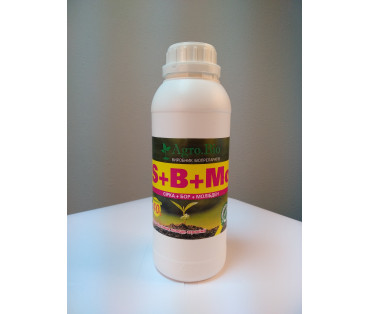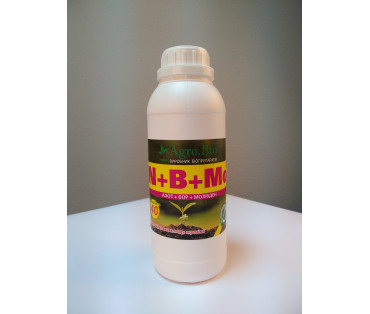Molybdenum (Mo) plays a role in the processes of growth, development, is a component in the composition of enzymes
Molybdenum (Mo)(in plants from 0.0005% to 0.002%), although the requirement for plant nutrition is relatively small in quantity, plays a significant role in the growth and development processes, is a component in many enzymes, in particular a specific enzyme (nitrate reductase ), which contributes to the restoration of nitrates in agricultural crops, participates in enzymatic processes in the transport of electrons, the metabolism of nitrogen (enzymes of nitrogenase (multienzyme), nitrate reductase), accelerates the synthesis of proteins increases the ability of nitrogen fixation nodule bacteria in legumes, improves calcium nutrition, contributes to increased frost resistance, drought resistance, performs a protective reaction against the toxic effects of aluminum. Molybdenum accumulates in young organs, and at the end of vegetation - mainly in seeds, the most needed elements are such crops as legumes, vegetables (cabbage, tomatoes, radish, lettuce, parsley, etc.).
Deficiency of molybdenum:with insufficient amount of molybdenum (less than 0.01 mg / kg of dry weight), external signs of a deficit are similar to those of nitrogen starvation - brown or brown dots appear on the lower leaves (veins remain green), and the surface deforms, the edges twist, growth stops . With the deficit of molybdenum, the processes of vital activity in plants (nitrogen exchange, accumulation of nitrates) are violated, especially in the cabbage family (the leaves become lanceolate, curled and wrinkled, the fabrics have a fine structure, sometimes transparent, the coloring is dirty gray); Cucumbers have chlorosis (at the edges of the leaves), in tomatoes leaves turn yellow, twist; in legumes and fruit and berry crops - on the leaves yellow-green spots are formed.
Excessive nutrition of molybdenum: leads to the emergence of a negative effect on agricultural plants, the growth of vegetative organs in plants slows down, bright spots appear on the leaves, copper is poorly digested and yields decrease.
Interaction of Molybdenum with other elements
| Antagonists (An excess of one contributes to the deficit of another element) | Sinengists (Improve mutuality of each other) | Blocks the interaction of each other (not recommended to combine together) |
| Cu (copper) | N (nitrogen) | - |
Related Products
Humate + Molybdenum «Agro.Bio»
Humate + Molybdenum "Agro.Bio" is an ideal solution for inoculation of seeds and top dressing of legumes. Maximum results with minimum processing costs. Molybdenum is one of the most important trace..
$15.00
Sulfur + Boron + Molybdenum «Agro.Bio»
In the soil, sulfur is present in plant organic residues and humus (in this form it is not available for the plant organism), it is necessary for the transformation of sulfur in the direction of miner..
$13.00
Nitrogen + Bor + Molybdenum «Agro.Bio»
The importance of nitrogen in plant life can hardly be overestimated. It is the main macronutrient, due to which the vegetative mass of the plant increases. Nitrogen plays the role of the main buildin..
$11.00



